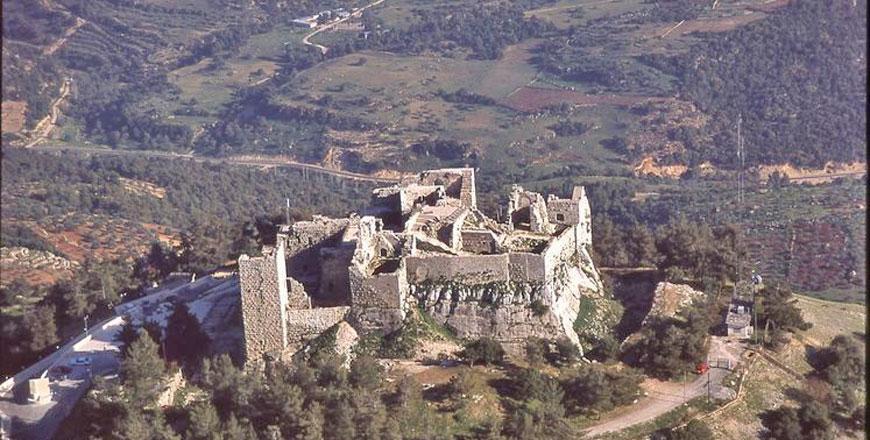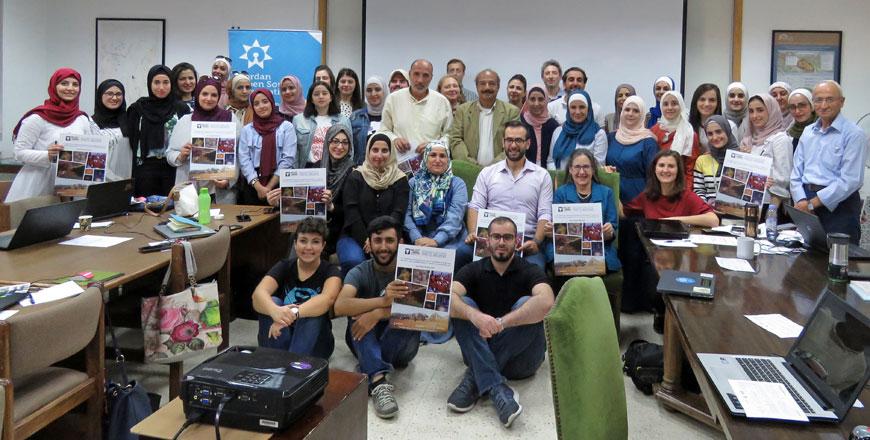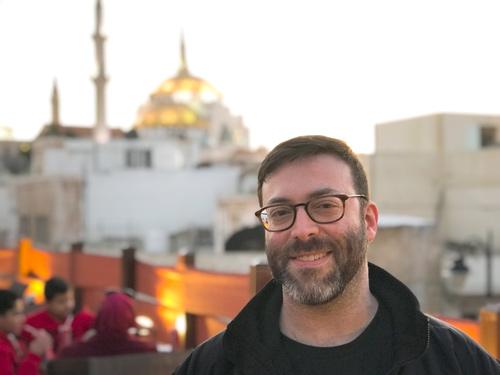You are here
ACOR starts digitalisation of photo library
By Saeb Rawashdeh - Jul 22,2018 - Last updated at Jul 22,2018

The aerial view of the Ajloun Castle, built by Ayyubids in 12th century and enlarged by Aibak Ibn Abdullah, the Mamluk governor, in 1214–15 (Photo courtesy of ACOR)
AMMAN — The American Centre of Oriental Research (ACOR) has started digitalising images and photo collections with the aim of preserving the Jordanian cultural heritage, and put in place a photo archive for research and education purposes
“The library is the mother of the archive”, said Barbara Porter, director of the ACOR on Wednesday, during her opening speech for the centre's second annual workshop titled “Archival Methods: A skill-sharing workshop for libraries, archives and museums".
The complete photo collection at the centre counts more than 100,000 images which enable local and international researchers to use visual documentation of cultural sites in Jordan, significant archaeological projects and expeditions undertaken in the last decades.
Therefore, ACOR started digitalising these images in its library, in order to make them available to researchers and the general public.
The archivist for ACOR’s photo archive project Steve Meyer addressed the public, explaining about various equipment used in the process and tutorials, among other technical information.
“Steve has brought essential technical expertise in photography to the ACOR Photo Archive and has done a fantastic job in enhancing the capabilities of the rest of the archival team,” said Jessica Holland, a British scholar from SOAS University of London.
In August, she will take over Meyer’s post, after he spent a year training archivists and introducing new technical approaches to the centre.
“Over 10,000 images are now online and searchable,” said Associate Director of ACOR Jack Green, adding that another major achievement initiated by Meyer was the intern training programme.
He added that Holland will continue the work of her predecessor “though with more focus on project outreach in Jordan, North America and worldwide”.
Meyer said the workshop was successful in a number of ways. "We were able to add to the technical training that is necessary for [photo] archiving, and to connect the community of librarians and archivists in this region with each other. I was encouraged by the interest of the attendees to build on the work they are already doing and their zeal to improve their abilities," he told the audience.
Preservation of history and the scholarship involved were the most exciting things for Meyer, who explained that "a strong and accurate archive allows researchers to find and spread information, which ultimately reaches a large number of people".
During his term at ACOR, Meyer also recruited members of the local community as interns, training them in the process of digitisation.
"The internship programme started with two members and has increased to four this year. I think each intern has done terrific work and they will add to the greater community with their knowledge and new skills," he stressed.
Being in Jordan enriched Meyer, he said, highlighting: "I’ve learned history, archaeology and processes I never would have learned otherwise. The people I’ve gotten to know are among the kindest and smartest I’ve met anywhere."
The workshop brought in representatives of the British Institute in Amman, German Protestant Institute of Archaeology, the Department of Antiquities, Jafr Tukan Library, National Library Archives, Sijal/Institute for Critical Thought, University of Jordan Library, Yarmouk University Library and The Palestinian Museum, Ramallah.
The photo archive is available at
https://photoarchive.acorjordan.org/.
Related Articles
AMMAN — Fifty students, recent graduates, heritage professionals and journalists gathered on Monday to learn how to edit and create Wikipedi
AMMAN — After working on commercial photography for years, an American photographer recently came to Jordan to work with the large photo arc
AMMAN — Given the numerous threats facing archaeological and cultural heritage sites in Jordan and the region, whether from war, development















